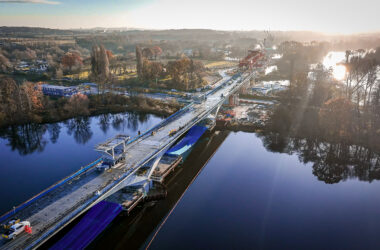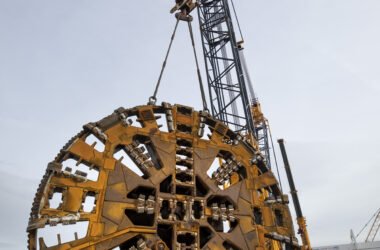Civil engineering at the University of Queensland, Australia have developed a hybrid fibreglass-concrete-steel bridge technique which is three times stronger and three times lighter than existing methods.
The technique is far cheaper than existing bridge-building methods and can be prefabricated off-site then transported in small parts using road transport.
The engineering breakthrough might reduce build times on major infrastructure projects from months or years to just around three days according to the team behind the technique.
The $50,000 award, announced in Portugal, recognises our design as a game-changer, coming in ahead of designs involving more than 200 authors from 50 countries […] It is three times as strong as conventional reinforced concrete bridges, yet only a third of the weight.
Because it’s light, the bridge can be pre-fabricated and transported to site where it can be put up in about 72 hours. This means projects that previously caused up to six months of disruption can now be completed in just three daysDr Fernando, from the School of Civil Engineering, University of Queensland, Australia
The University of Queensland team joined forces with a Brisbane-based company called RocketC, as well as global engineering consultancy Arup and the Hong Kong Polytechnic University to develop the idea.
The idea has won the inaugural World Innovation in Bridge Engineering (WIBE) award. The prize is sponsored by both the Faculty of Engineering at The University of Porto in Portugal, and BERD, a project, research and engineering firm specialising in bridges.
The team intend to use the competition prize money to continue research into applications and improvements for the bridge technology.








